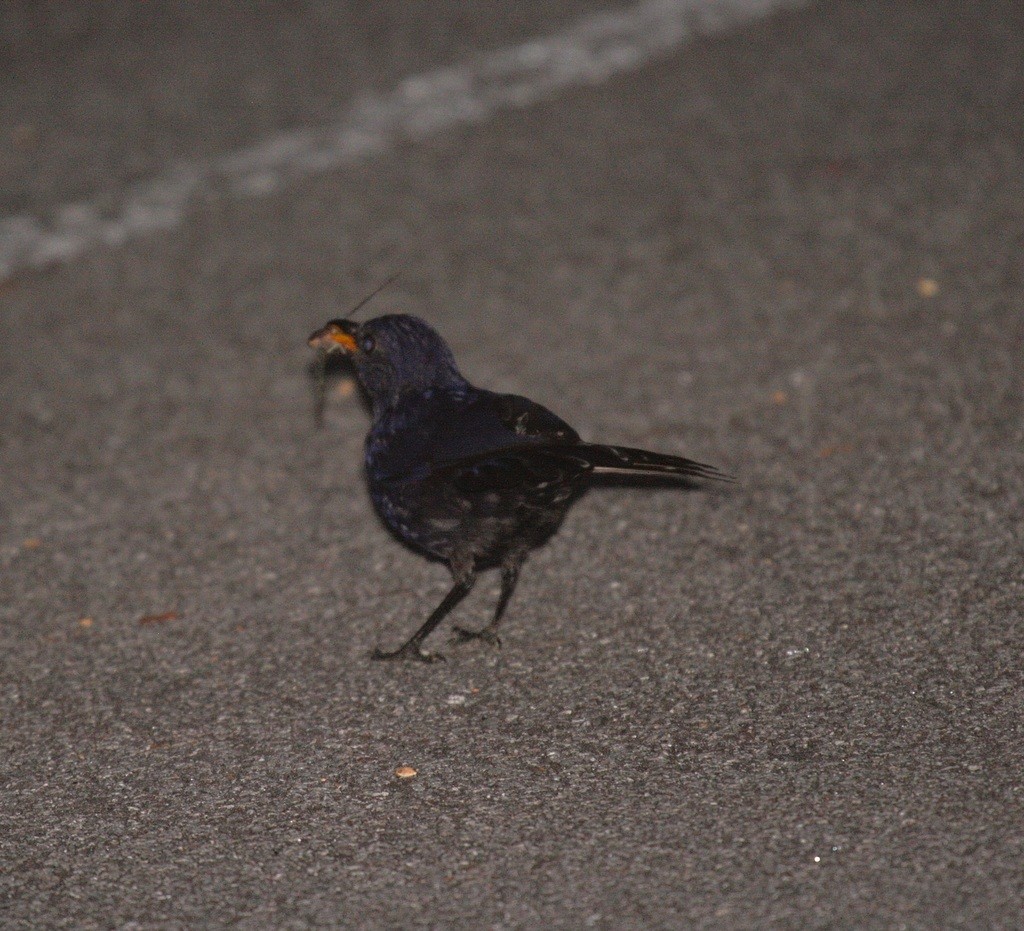Malayan Whistling Thrush
A species of Whistling thrushes Scientific name : Myophonus robinsoni Genus : Whistling thrushes
Malayan Whistling Thrush, A species of Whistling thrushes
Botanical name: Myophonus robinsoni
Genus: Whistling thrushes
Content
Description General Info
 Photo By neomorphus , used under CC-BY-NC-4.0 /Cropped and compressed from original
Photo By neomorphus , used under CC-BY-NC-4.0 /Cropped and compressed from original Description
The species is monotypic. Its length is 25–26 cm (9.8–10.2 in). The length of the wings of the male is 14–15 cm (5.5–5.9 in). The wing length of the female is 13 cm (5.1 in). Its weight is 87–105 g (3.1–3.7 oz). The male is mostly black-blue. Parts of the head are deep purplish-blue. There is a patch of metallic blue in the lesser coverts. The male and female are very similar. The female is slightly browner and slightly smaller. The juvenile is sootier. 
Size
26 cm
Nest Placement
Cliff
Feeding Habits
Malayan Whistling Thrush primarily consumes topsoil and leaf-litter invertebrates, as well as small reptiles and amphibians. While foraging, malayan Whistling Thrush is not only ground-based but also searches the lower forest storey, indicating a versatile feeding behavior.
Habitat
The preferred habitat of malayan Whistling Thrush is the ground and lower strata of hill and montane evergreen forests, often in proximity to running water such as in moist gulleys or alongside streams. Malayan Whistling Thrush is typically associated with environments that possess dense vegetation providing moisture and cover and may be observed at times on mountain roadsides during periods of low light.
Dite type
Omnivorous
General Info
Feeding Habits
Bird food type
Behavior
Its call is a tseee. Its song contains "fluty and scratchy notes". Its diet is probably insects. Breeding has been observed in March and September. The clutch size is 1–2 eggs. The eggs are bluish-grey with pinkish-brown specks. The nest is built of dried plant material and is in a half-cup shape. 
Distribution Area
Its natural habitat is montane forests. It is usually found near streams. It is situated at elevations of about 750–1,750 m (2,460–5,740 ft) in central peninsular Malaysia. The Malayan whistling thrush historically ranged from the Cameron Highlands to the Genting Highlands. It was present in the Cameron Highlands, where it was trapped in the 1950s and 1960s, but a further survey in 2009–2010 failed to find it there, bringing into question the reliability of intermediate sightings; it is possible that there may have been confusion with the subspecies dicrorhynchus of the blue whistling thrush (Myophonus caeruleus). Since 1980, it has been trapped and recorded with certainty only in Fraser's Hill. 
Species Status
The species's population is estimated at 2500–9999 mature and 3500–15000 total individuals. The population is suspected to be decreasing. The species has areas of undisturbed habitat, but may be threatened by habitat destruction and degradation caused by conversion of forest to agricultural land, water pollution, invasive species and overdevelopment. Because the species may have a small range and a small population, the IUCN Red List of Threatened Species has listed it as near threatened. 
Scientific Classification
Phylum
Chordates Class
Birds Order
Perching birds Family
Old world flycatchers Genus
Whistling thrushes Species
Malayan Whistling Thrush